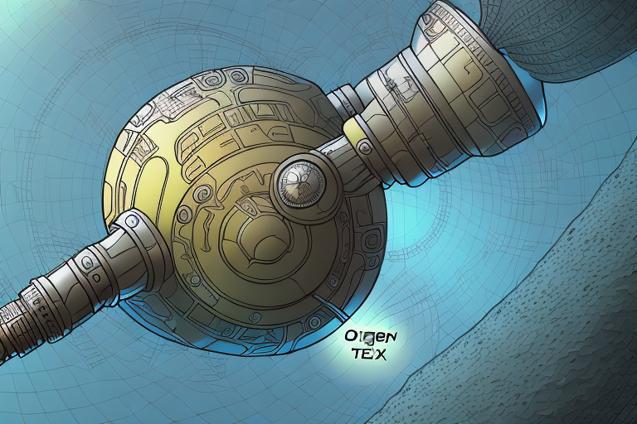
Discover the benefits of Nitrox diving and how it can enhance your underwater experience while exploring the world's oceans during your sailing adventure.
The Benefits of Nitrox Diving
As you embark on your sailing adventure with your family, exploring the world and leaving the rat race behind, you’ll undoubtedly come across some of the most beautiful and diverse underwater environments. One of the most popular activities for sailors and their families is scuba diving and snorkeling. In this article, we’ll explore the benefits of Nitrox diving, a popular choice for many divers looking to enhance their underwater experience.
What is Nitrox?
Before we dive into the benefits of Nitrox diving, let’s first understand what Nitrox is. Nitrox, also known as Enriched Air Nitrox (EAN), is a breathing gas mixture that contains a higher percentage of oxygen compared to regular air. While normal air consists of approximately 21% oxygen and 79% nitrogen, Nitrox mixtures typically contain between 22% and 40% oxygen, with the remaining percentage being nitrogen.
The most common Nitrox mixtures are EAN32 (32% oxygen, 68% nitrogen) and EAN36 (36% oxygen, 64% nitrogen). These mixtures are widely available at dive centers and are often used by recreational divers.
Benefits of Nitrox Diving
Now that we have a basic understanding of what Nitrox is, let’s explore the various benefits of using this enriched air mixture while diving.
1. Longer Bottom Times
One of the main advantages of Nitrox diving is the ability to stay underwater for longer periods of time without increasing the risk of decompression sickness (DCS). This is because the higher oxygen content in Nitrox reduces the amount of nitrogen absorbed by your body during a dive.
As a result, Nitrox divers can enjoy longer bottom times compared to those diving on regular air, especially at depths between 60 and 100 feet (18 to 30 meters). This allows you to explore more of the underwater world, take your time observing marine life, and capture better photographs without feeling rushed.
2. Shorter Surface Intervals
In addition to longer bottom times, Nitrox diving also allows for shorter surface intervals between dives. Since your body absorbs less nitrogen while diving with Nitrox, you’ll off-gas the nitrogen more quickly during your surface interval. This means you can get back in the water sooner and enjoy more dives in a single day.
3. Reduced Fatigue
Many divers report feeling less fatigued after diving with Nitrox compared to regular air. This is likely due to the reduced nitrogen absorption and the increased oxygen content in the breathing gas. The extra oxygen can help your body metabolize energy more efficiently, leading to a more energetic and refreshed feeling after a dive.
4. Increased Safety Margin
Diving with Nitrox provides an increased safety margin against decompression sickness. Since your body absorbs less nitrogen during a Nitrox dive, the risk of DCS is reduced, provided you stay within the limits of your dive computer or dive tables.
It’s important to note that diving with Nitrox does not eliminate the risk of DCS entirely, and you should always follow safe diving practices and adhere to your dive plan.
5. Extended No-Decompression Limits
For divers who enjoy deep diving, Nitrox can provide extended no-decompression limits (NDLs) compared to diving on regular air. This means you can spend more time at depth without having to perform decompression stops on your ascent.
However, it’s essential to remember that diving with Nitrox introduces a new risk factor: oxygen toxicity. To avoid this, you must stay within the maximum operating depth (MOD) for your specific Nitrox mixture. Your dive computer or dive tables will provide this information.
Nitrox Diving Considerations
While Nitrox diving offers numerous benefits, there are some important considerations to keep in mind:
1. Proper Training and Certification
Before diving with Nitrox, you must complete a Nitrox certification course from a recognized dive training agency, such as PADI or SSI. This course will teach you the necessary skills and knowledge to safely plan and execute Nitrox dives, including understanding oxygen exposure limits, analyzing your Nitrox mixture, and setting your dive computer for the correct gas mixture.
2. Oxygen Toxicity
As mentioned earlier, diving with Nitrox introduces the risk of oxygen toxicity. This occurs when the partial pressure of oxygen (PPO2) in your breathing gas exceeds safe limits, leading to symptoms such as dizziness, convulsions, and even unconsciousness. To avoid oxygen toxicity, always stay within the maximum operating depth for your specific Nitrox mixture and follow your dive computer or dive tables.
3. Equipment Compatibility
Not all scuba diving equipment is compatible with Nitrox. Some components, such as regulators and tank valves, may require special cleaning and servicing to ensure they are oxygen-compatible. Before diving with Nitrox, make sure your equipment is suitable for use with enriched air mixtures.
Conclusion
Nitrox diving offers numerous benefits for sailors and their families looking to enhance their underwater adventures. With longer bottom times, shorter surface intervals, reduced fatigue, and increased safety margins, Nitrox diving can help you make the most of your scuba diving experiences while exploring the world’s oceans.
Remember to always dive within your limits, obtain proper training and certification, and follow safe diving practices. With the right preparation and knowledge, Nitrox diving can be a fantastic addition to your sailing adventure.